In our previous blog post we had discussed about What is Assignment in Salesforce Flow.In these blog post we discuss about What is Decision Element in Salesforce Flow
Contents
- 1 What is Decision Element in Salesforce Flow
- 2 Introduction
- 2.1 Understanding the Decision Element
- 2.2 Setting Up a Decision Element
- 2.3 Components of a Decision Element
- 2.4 Use Cases of Decision Element
- 2.5 Best Practices for Using Decision Elements
- 2.6 Examples of Decision Element in Action
- 2.7 Common Mistakes and How to Avoid Them
- 2.8 Advanced Features of Decision Elements
- 2.9 Performance Considerations
- 2.10 Troubleshooting Decision Elements
- 2.11 User Experience and Decision Elements
- 2.12 Future Trends in Salesforce Flows
- 2.13 Conclusion
- 2.14 FAQs
What is Decision Element in Salesforce Flow
Introduction
Salesforce Flow is a powerful tool within the Salesforce ecosystem that enables users to automate complex business processes with ease. Whether it’s updating records, sending notifications, or routing data, Salesforce Flow brings efficiency and accuracy to business operations. A key component of this automation is the Decision Element, which plays a crucial role in directing the flow based on specific criteria.
Understanding the Decision Element
A Decision Element in Salesforce Flow is akin to a traffic controller. It evaluates the conditions defined by the user and routes the flow accordingly. Essentially, it acts as an “if-else” statement in programming, determining which path the flow should take based on the specified criteria.
Setting Up a Decision Element
Login to Salesforce Account

Click Gear icon Navigation Setup
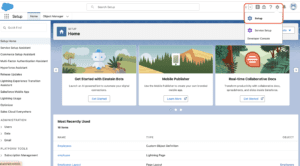
Search Quick find box in flows
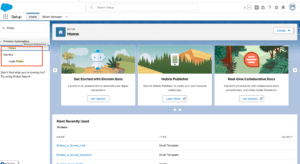
Click New Flow
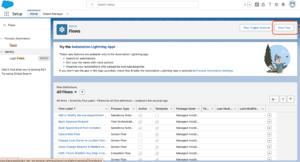
Select Screen Flow
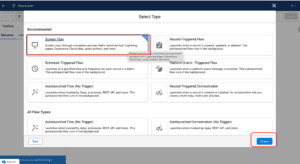
Add element in Decision
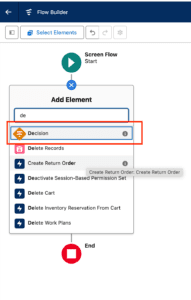
Fill the details
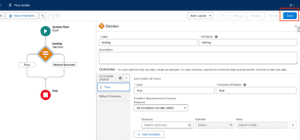
Click Save
Components of a Decision Element
A Decision Element consists of several key components:
- Decision Outcome: The possible paths the flow can take.
- Default Outcome: The path the flow takes if none of the criteria are met.
- Conditions and Logic: The specific criteria that determine the flow’s path.
Use Cases of Decision Element
Decision Elements are versatile and can be used in various scenarios:
- Routing Records Based on Criteria: Direct records to different users or departments based on specific attributes.
- Conditional Data Updates: Update records only if certain conditions are met.
- Sending Notifications: Trigger notifications based on user actions or data changes.
Best Practices for Using Decision Elements
To maximize the effectiveness of Decision Elements:
- Simplify Complex Flows: Break down complex logic into manageable conditions.
- Ensure Clear Criteria: Clearly define the criteria to avoid confusion.
- Test and Debug: Regularly test your flows to ensure they work as expected.
Examples of Decision Element in Action
Consider these real-world scenarios:
A sales lead is routed to different sales reps based on geographic location.
- Customer service cases are escalated based on priority and age of the case.
Common Mistakes and How to Avoid Them
Avoid these pitfalls:
- Overcomplicating Decision Criteria: Keep criteria straightforward to ensure clarity.
- Ignoring Default Outcomes: Always define a default outcome to handle unexpected scenarios.
Advanced Features of Decision Elements
Enhance your Decision Elements by:
- Combining with Other Elements: Use Decision Elements alongside other flow elements for more complex logic.
- Nested Decision Elements: Implement nested Decision Elements for multi-layered decision-making.
Performance Considerations
When using Decision Elements, consider:
- Impact on Flow Performance: Complex decision logic can slow down flows.
- Optimization Tips: Streamline conditions and minimize the number of decision branches.
Troubleshooting Decision Elements
Common issues and solutions include:
- Common Errors and Solutions: Identify and resolve common errors such as incorrect logic or missing criteria.
- Logging and Monitoring: Use logging and monitoring tools to track flow performance and issues.
User Experience and Decision Elements
Improve user interaction by:
- Enhancing User Interaction: Design flows that are intuitive and user-friendly.
- Feedback and Adjustments: Gather user feedback and make necessary adjustments to improve the flow.
Future Trends in Salesforce Flows
Stay ahead of the curve with these trends:
- Innovations in Automation: Keep an eye on new features and updates in Salesforce Flow.
- Evolving Use of Decision Elements: Explore new ways to leverage Decision Elements for more efficient automation.
Conclusion
In summary, Decision Elements are a critical part of Salesforce Flow, providing the logic needed to automate complex business processes. By understanding and effectively using Decision Elements, you can enhance the efficiency and accuracy of your workflows, ultimately driving better business outcomes.
We Want to more about What is a Decision Element in Salesforce Flow Click Here
FAQs
What is a Decision Element in Salesforce Flow?
A Decision Element evaluates conditions and routes the flow based on specified criteria, acting as an “if-else” statement.
How do you configure a Decision Element?
To configure a Decision Element, navigate to the Flow Builder, add the Decision Element, and define the decision criteria.
What are some common use cases for Decision Elements?
Common use cases include routing records, conditional data updates, and sending notifications based on specific conditions.
What are best practices for using Decision Elements?
Best practices include simplifying complex flows, ensuring clear criteria, and regularly testing and debugging your flows.
How can I troubleshoot issues with Decision Elements?
Troubleshoot by identifying common errors, using logging and monitoring tools, and ensuring all criteria and logic are correctly defined.
In our next blog post we will discuss about What is Loop Element in Salesforce Flow

2 thoughts on “What is Decision Element in Salesforce Flow”